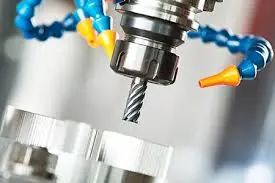Prototyping is one of the most crucial stages in the product development cycle. The prototyping stage is where the design iteration from the ideation stage is evaluated for both design feasibility and end-use functionality.
Creating a cad prototype helps to avoid the common flaws in a design that can go undetected until product lunch. As bringing any idea from design to perfection involves several tweaking and modification, when a prototype doesn’t meet expectations, it is only natural to be disappointed. Irrespective of the disappointments with your prototype, it is very imperative that its failure is evaluated to eliminate any problem and fix defects. Here’s what to do when your prototype doesn’t work:
Consider the environment and testing parameters
Before you go right back to the drawing board, take some time to evaluate your testing parameters and the testing environment. It is not uncommon to find problems in the testing environment or testing parameters rather than the design itself.
After ensuring that the components have been assembled completely and accurately, using a software that measures important parameters during testing, re-run the test and compare the results. It is very possible that the prototype isn’t being evaluated in conditions for its optimal performance and consider how significant the deviations from this conditions might affect the final design.
Finally, consider and duly note how the prototype behaves during its failure in this testing phase.
Re-evaluate the design of your cad prototype
Begin by examining the prototype’s design for potential problems. If your cad prototype was designed with a number of variables, there is a likelihood that the errors in testing is as a result of a disagreement in the specifications of the prototype and the intended specifications.
You might also need to take a closer look at the numerical calculations for arithmetical accuracy and transposition errors.
Check the material
The material used in the prototyping of any design is of utmost importance in its performance and functionality. Evaluate the material for its suitability and consider any substitutions of necessary. The way the material behaves in the testing environment will play a key role to how it functions in its end use. Also, if your prototype is the combination of multiple materials, you might need to run a full diagnostics and identify what exact component is the problem.
Look at the prototype
After evaluating the material, it is now time to consider the prototype itself. Consider what type of problem you’re facing with your prototype and what may be causing it. It is important to bear in mind that your prototype won’t be perfect but should mirror the final design’s component as closely as possible.
You might also need to consider the geometry of your prototype as minor variances may become significant in certain conditions while testing that your design fails. If you have tested your prototype phase by phase, immediately consider the additions or modifications that have occurred since the last known successful evaluation.
FirstPart delivers high-quality rapid prototyping solutions to meet different types of client specifications. Our professional expertise makes us able to turn projects around quickly without compromising on the functionality and quality of your parts. For all rapid prototyping services in china, First Part is your one-stop shop for premium quality services and low-volume manufacturing. Contact us today!










